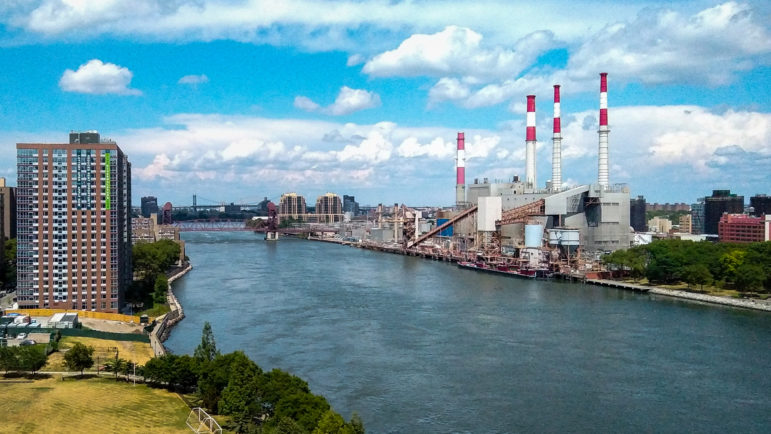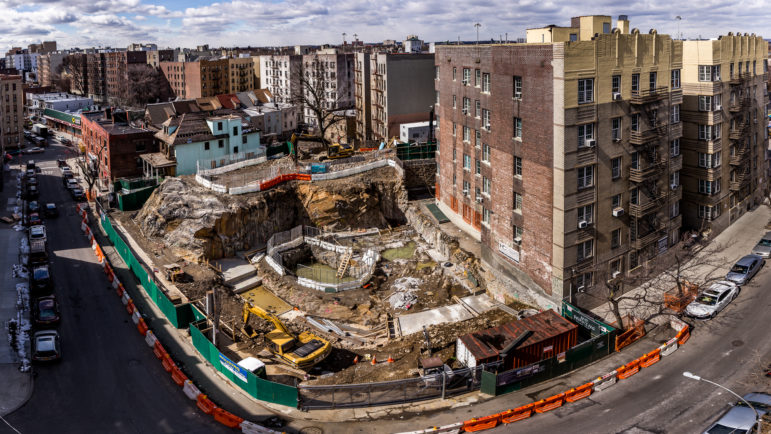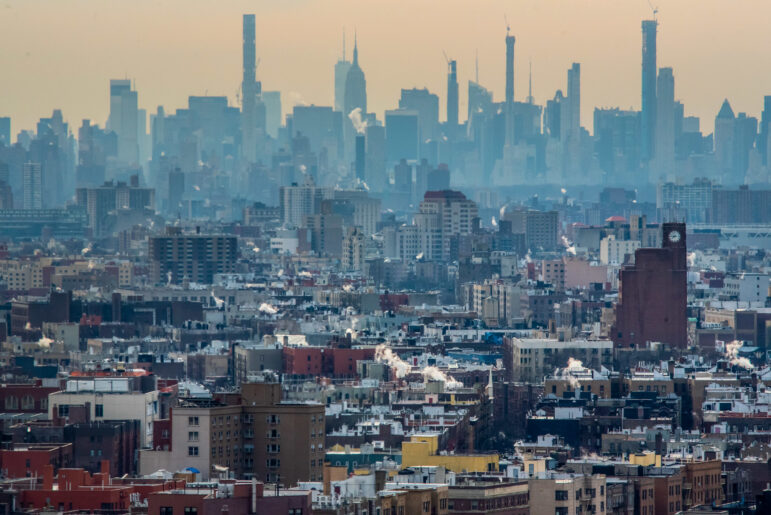While state officials say the two projects will power New York City with wind, solar and hydropower, both projects have been criticized by environmentalists for their potential impact on local communities and ecosystems.

Adi Talwar
High voltage transmission lines will run 333 miles underground or underwater from the Canadian border, south through Lake Champlain, along and under the Hudson River, and eventually terminate at a converter station at the northern end of Astoria, Queens.During the opening ceremony of Climate Week NYC on Monday, Gov. Kathy Hochul announced that she was awarding contracts to two project proposals that would advance New York’s renewable energy goals.
Hochul said her office was originally going to choose between one of two finalists from the seven proposals submitted in response to the New York State Energy Research and Development Authority’s (NYSERDA’s) January request for proposals that would bring renewable energy into the state. But ultimately she decided to select both projects.
“I say if we’re really serious about getting the job done, and relying less on fossils, never on fossils and more [on] renewables, let’s do both together,” she said. “I hope that you’ll see that New York State is not just talking the talk, we’re going to walk the walk, and we’re going to make sure we get this done.”
The projects encompass a 174-mile buried transmission line from Delaware County to Queens and a 339-mile cable that will run underground and underwater from Canada to Queens.
Combined, they will produce enough renewable energy to heat 2.5 million homes and reduce greenhouse gas emissions by the equivalent amount of removing one million cars from the road, NYSERDA reported in a press release. The two companies will invest about $460 million in community benefit funds, it added.
Gov. Hochul said in her speech that they will also create more than 10,000 jobs.
The projects, however, will still need to go through 60 days of public comment, a NYSERDA spokesperson confirmed. And both have been criticized by environmentalists and community members.
One of the proposals, Clean Path NY—created in partnership by multiple companies including the New York Power Authority—was the subject of controversy over the summer, when South Bronx residents discovered the proposal called for a high-voltage battery converter station near the bustling Bronx Terminal Mall and the soon-to-open Bronx Children’s Museum. The neighborhood, already home to multiple peaker plants, waste transfer stations and a major highway, has earned the nickname “asthma alley” because of its higher-than-normal asthma rates.
READ MORE: Rep. Ritchie Torres Strikes Deal to Keep Proposed High-Voltage Converter Out of South Bronx’s ‘Asthma Alley’
A report by the Bronx Institute for Urban Systems opposing the converter station’s location in the Bronx cited multiple studies conducted in the United States and United Kingdom linking exposure to electromagnetic fields and high-voltage AC transmission lines to childhood cancer clusters.
In August, U.S. House Representative Ritchie Torres, who represents the Bronx district, announced that he negotiated with the project’s leaders and that they agreed to build the converter in a non-residential area.
The revised proposal on NYSERDA’s website shows the description of the new location of the converter station as redacted, but a spokesperson with the agency told City Limits it will be at the site of the Astoria Energy Complex, an industrial area on Steinway Street in Queens. Astoria has also been nicknamed “asthma alley” for health effects resulting from its proximity to power plants.
Cesar Yoc of Bronx Institute for Urban Systems, who worked on the report opposing the Clean Path NY project in the borough, said that the risk of increased cancer in children is higher within one-fourth of a mile from the converter station.
The new proposed location in Queens appears to be beyond that distance from residential areas. Still, the project will need to pass “a rigorous permitting and regulation process” with multiple state agencies, including the Department of Environmental Conservation, the NYSERDA spokesperson said, adding that the agencies “will look to site the project with the least amount of environmental impact possible.”
“If the selected projects are approved, NYSERDA will strongly encourage the developers to engage with communities where the projects are being developed,” the NYSERDA spokesperson told City Limits.
The other approved proposal, Champlain Hudson Power Express project by the Blackstone-backed Transmission Developers and Hydro-Québec, would connect a power line from Montreal, Quebec, to Astoria. It has been criticized for the environmental damage it could potentially cause in indigenous Canadian lands, as well for the impact that construction of the transmission line could have on the Hudson River’s ecosystem.
READ MORE: New York’s Hydropower Plan Stirs Concerns Over Impact on Waterways
In 2019, Riverkeeper withdrew its support for the project, citing a Harvard study finding that construction of hydropower dams leads to contamination in the ecosystems of fish, birds, seals and other species in indigenous communities. “Riverkeeper opposes any such additional dam construction leading to greater river and habitat destruction as well as additional negative impacts to the health, quality of life and cultural identity of Canada’s indigenous communities,” the letter said. Hudson Riverkeeper released a statement Monday denouncing Hochul’s support for the project, calling it “a shameful use of public money.”
But representatives for Hydro-Québec told City Limits it will not build any additional dams as part of the plan. And the route was modified following feedback from environmental organizations, including Riverkeeper, when the group initially signed off on the project back in 2013, according to Jennifer Laird-White, an executive of Transmission Developers. “CHPE has been carefully designed to ensure the Hudson River, and all the waterways we will utilize, as well as upland sites have minimal disruption,” she told City Limits. She added that the project includes a $117 million investment in Lake Champlain and in New York waterways.
In her speech, Hochul also promised to “go all in” with solar energy and expanded the goal set in the state’s Climate Leadership and Community Protection Act to produce six gigawatts of electricity from solar by 2025. Instead, she said, New York will build out at least 10 gigawatts of solar by 2030.
She wrapped up her speech by encouraging Climate Week participants to bring bold ideas on transitioning to clean energy.
“This is how we can lead our way into the energy future, create jobs, and make up for all of the past destruction of beautiful neighborhoods where children are still growing up with environmental crises like I did as a child,” she said. “I want to fix that. And I’m impatient.”
Liz Donovan is a Report for America corps member.









